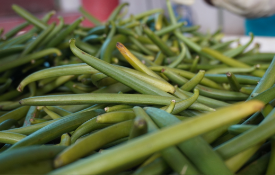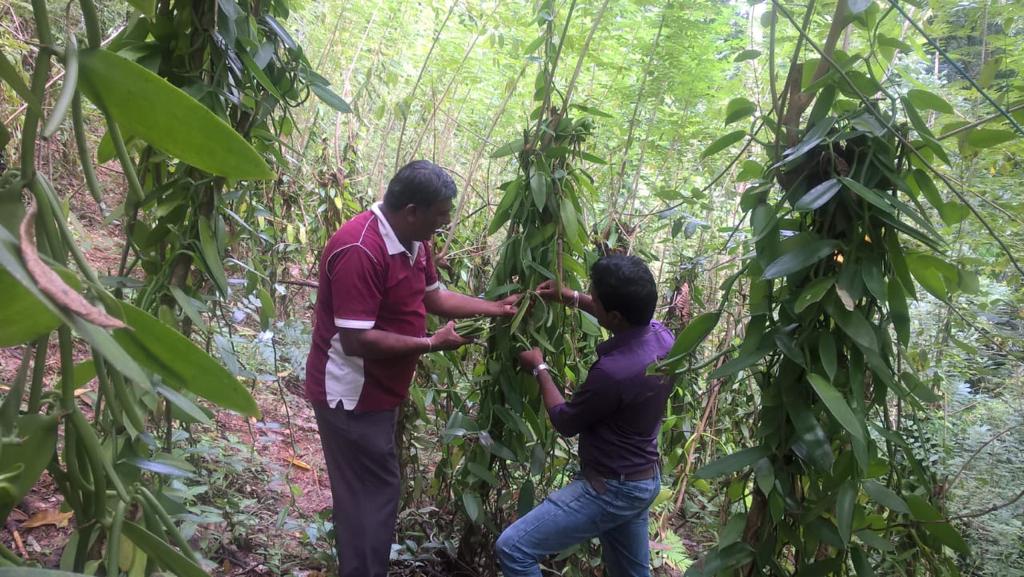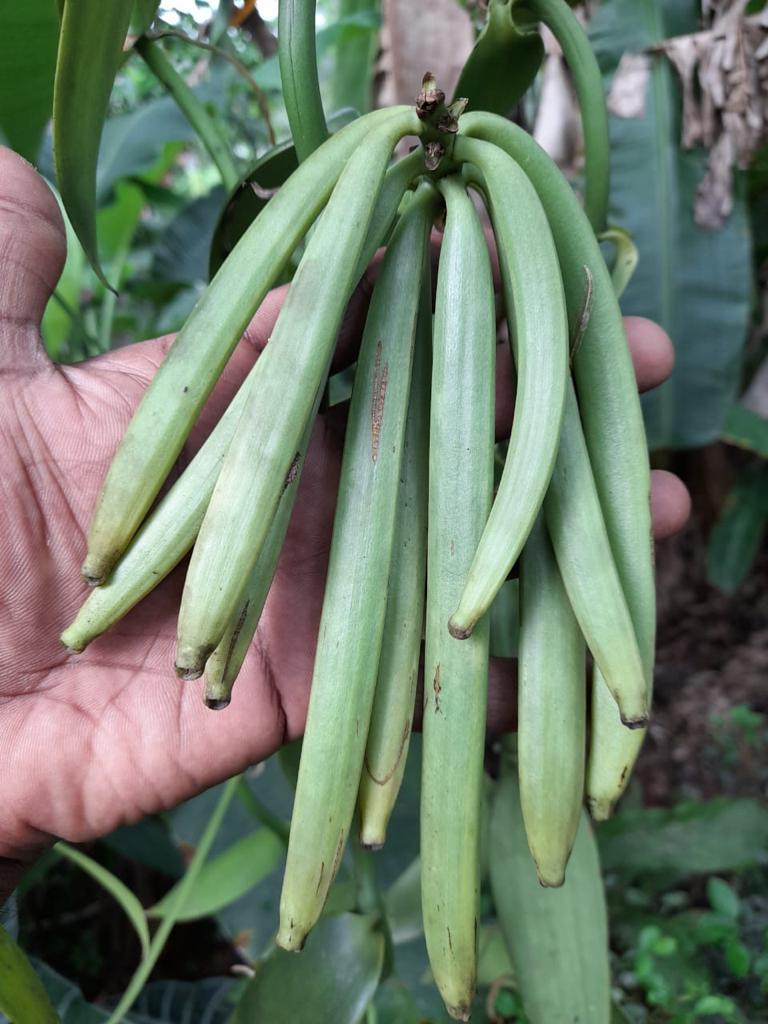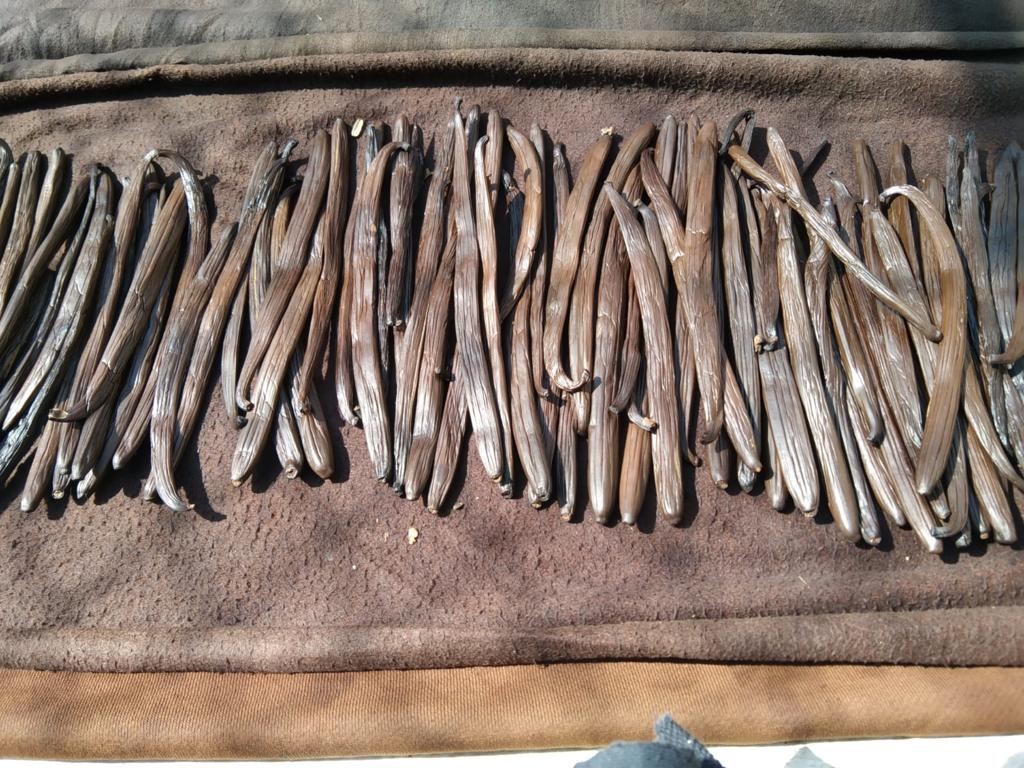
How do Vanilla Beans are harvested?
They are grown throughout tropical areas across the globe in which warm temperatures all year round and adequate rainfall create conditions for soil and climate that allow for proper development. They actually turn colored green (not brunette) after harvest.

Vanilla Beans are found in the “Bean Belt” which is a warmer climate zone which is 25 degrees south and 25 degrees north of the Equator. Cocoa beans, coffee beans, and other beans all thrive in this area. Vanilla Beans however are the most sensitive because they’re made from a fine flour.
Like other orchids, the Vanilla Planifolia (the vanilla bean orchid) is an epiphyte which lives on the host tree. It’s a plant that is rapidly growing within and around the existing tree, but it doesn’t use the nutrients of the tree. Vanilla orchids can grow at least 3 years old before it starts to produce vanilla pods of beans. The pods themselves need another 9 to 10 months to grow before they are able to be harvested.
Features of Green Vanilla Beans

The seed pod develops over the course of 8 to 9 months. A vigorous vine may produce up to 100 vanilla pods each year. The pod is still green, plump, and in its infancy. There is no fragrance at this moment.
The capsule, often known in the trade as a bean, is pendulous, narrowly cylindrical, and obscurely three-angled, measuring 10–25 cm long and 5–15 mm in diameter.
When ripe, it contains a plethora of extremely little globose seeds, around 0.3 mm in diameter, which are released by the capsule splitting longitudinally.
In commercial production, capsules are selected before they are fully grown.
To deter theft, owners in some countries prick unique marks on the green pods of the vines.
What are the harvesting indicators for green Vanilla beans?
The fruit’s thickest section (the “flower end”) becomes pale yellow.
The pod’s overall colour changes from dark green to bright green.
The lustre of the fruits diminishes, and they become slightly tasteless.
Two distinct lines extend from one end of the fruit to the other.
Pulling well-ripened beans in the other way readily separates them from the bunch.
The stages of Vanilla Curing
There are six phases of vanilla harvesting. In order for this process to succeed, it must have an exact balance of humidity and temperature.
Here are the six stages in Vanilla Processing:
1. Harvesting
Beans are carefully removed off the stem with the sharpest knife. They are green and have no odor.
2. Killing/Blanching
The outer surface of the beans gets removed by placing it in hot water to prevent it from growing any further. This is not just killing the exterior skin of the vanilla bean however, it also kills other pathogens that could be causing disease.
3. Sweating
Vanilla pods get exposed heat in the day, and covered in blankets at night in order to “sweat” to release their unique scent and flavor. It is during this time that the familiar, delicious vanilla flavor and aroma is revealed.
4. Drying
Similar to sweating process is more of an science than art, however science remains an important aspect. Vanilla beans are laid out in the sun for all day and taken inside at night up until the water content of the beans has dropped to 18% to 35%. (Grade-b vanilla can be dried for longer with a moisture level of 20 percent. Grade-a vanilla is dried for shorter amounts of time, with a moisture content of about 30 percent.)
Vanilla beans drying
5. Grading
After drying vanilla beans will be laid on and sorted according to their shape, quality, and moisture content. They are divided into categories, such as “grade-A”, “grade-B”, “gourmet”, “black” and so on. Grade-a and Grade-b are determined by the moisture content of the beans and are easy to measure. However “gourmet” as well as “black” are more subjective.
6. Transportation
Dried beans can be divided by making use of glass grading, and then packed and usually sealed. Vacuum sealing is crucial as it guarantees that the beans’ moisture stays the same. Moisture isn’t able to get in, and it’s impossible for moisture to escape. This helps ensure that the quality of the bean remains constant throughout the entire process from the farm until end-user.

The entire process, from growing the vanilla bean all the way to the final packaging could take about four years making this tiny vanilla bean among the most complex fruits we have on earth.
After receiving vanilla beans at VanillaPura every bean is scrutinized individually to ensure that standards of quality are maintained. After a thorough examination We then vacuum seal the vanilla beans inside pouches that are based on the weight or quantity of beans and then we deliver the beans in bubble-lined, sealed containers or envelopes.
If vanilla beans are purchased at the hands of our patrons, we suggest that the beans be kept in their sealed vacuum pouch in a dry, cool and dark area till they’re ready be utilized. The shelf life could last as much as a year, but we strongly recommend making use of them as soon as possible. The most secure place in which they can be stored is to submerge them in alcohol so that it is inaccessible to mold to form.
